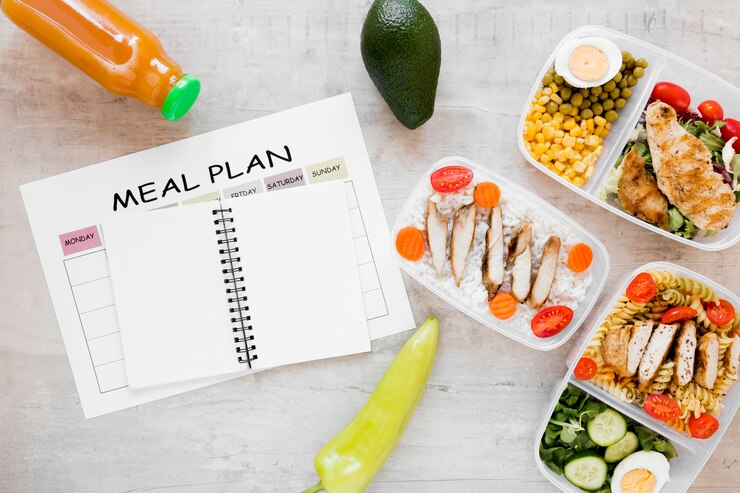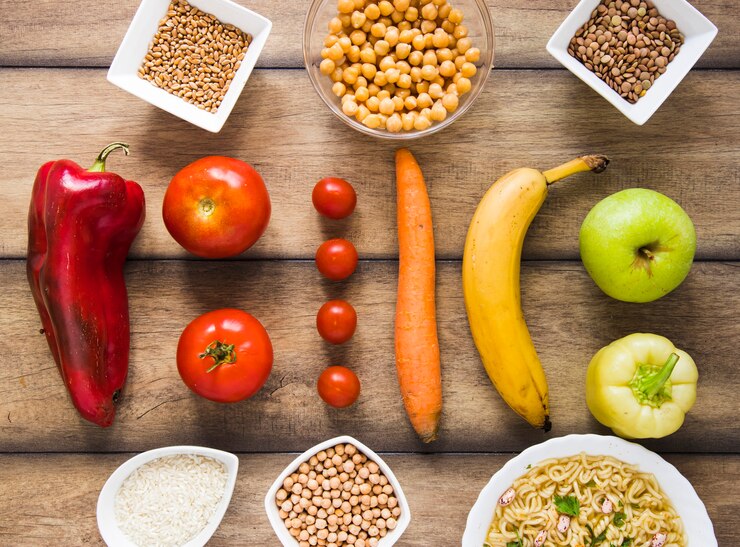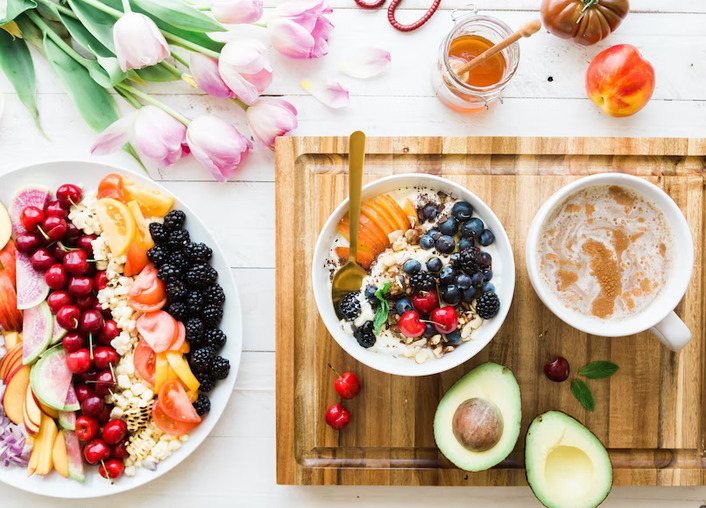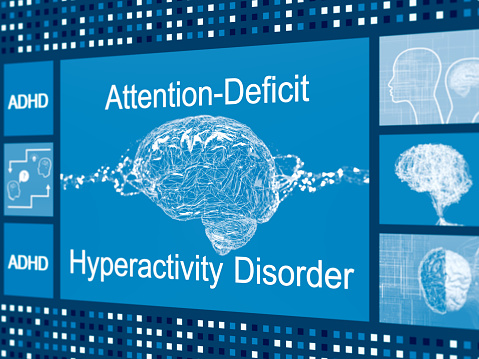How to Set Up a Simple, Healthy Diet Plan for Weight Loss

In a world saturated with conflicting dietary advice, complex meal plans, and overwhelming weight loss strategies, it’s easy to feel lost and discouraged when achieving sustainable weight loss. However, amidst the noise, there exists a simpler and more effective approach that prioritizes balance, nutrition, and long-term success. By setting up a simple, healthy diet plan for weight loss, we can unlock the power to transform our bodies and minds, fostering a harmonious relationship with food and achieving our weight loss goals in a way that nourishes our overall well-being. Let’s explore the key steps required to construct a practical and healthy diet plan for weight loss. From assessing our current eating habits to incorporating nutrient-dense foods, practicing mindful eating, and implementing strategic meal planning, each aspect will contribute to a holistic and sustainable approach to weight management.
Assess Your Current Eating Habits

-
Reflect on Your Dietary Patterns:
Examine your current eating habits and identify any areas that may contribute to weight gain or hinder your progress. Are there specific types of food you tend to overconsume? Do you frequently rely on processed or high-calorie foods? This self-awareness will lay the foundation for positive change.
-
Determine Your Caloric Needs:
Consult a healthcare professional or utilize online calculators to estimate your daily caloric needs based on age, gender, weight, and activity level. Understanding your caloric requirements will help you create an appropriate calorie deficit for weight loss without compromising your overall health.
-
Track Your Food Intake:
Maintaining a food diary or using a mobile app to keep track of your meals and snacks provides valuable insight into your eating patterns. By documenting everything you consume, including portion sizes and the time of day you eat, it becomes possible for you to identify trends and behaviours that may be contributing to overall weight gain or hindering your progress. This tracking process can highlight areas where you may be consuming excess calories or lacking in essential nutrients, empowering you to make informed choices for healthier eating habits.
-
Assess Emotional Eating Triggers:
Many people turn to food for comfort, fight restlessness, stress relief, or as a coping mechanism for difficult and complex emotions. Take time to reflect on your emotional relationship with food and identify any triggers that may lead to overeating or unhealthy food choices. Common triggers include boredom, loneliness, sadness, or anxiety. By recognizing these triggers, you can develop alternative coping strategies such as practicing mindfulness, engaging in hobbies, or seeking support from friends and family to address underlying emotional needs without resorting to food.
-
Evaluate Meal Timing and Frequency:
Pay attention to the timing and frequency you have scheduled for meals and snacks throughout the day. Skipping on meals or going long periods without having food certainly leads to excessive hunger eventually leading to potential overeating later. Similarly, eating too frequently or grazing constantly can make maintaining a calorie deficit for weight loss challenging. Aim for balanced meals spaced evenly throughout the day to regulate hunger levels and stabilize blood sugar levels. Finding a meal frequency and timing that works best for your schedule and preferences can support sustainable weight loss efforts while promoting energy levels and satiety.
Emphasize Nutrient-Dense Foods:

-
Fill Your Plate with Vegetables and Fruits:
Vegetables and fruits are packed with essential vitamins, minerals, and dietary fibre while being low in calories. Aim to include a variety of colourful options in your meals to ensure a wide range of nutrients. They will provide satiety, support digestion, and contribute to overall well-being.
-
Choose Lean Protein Sources:
Protein is a crucial component of an easy diet plan for weight loss as it helps preserve lean muscle mass, promotes satiety, and aids in recovery. Opt for lean sources such as skinless poultry, fish, legumes, tofu, and Greek yogurt. These protein-rich foods will keep you feeling full and energized throughout the day.
-
Incorporate Whole Grains:
Swap refined grains for whole grains like quinoa, brown rice, whole wheat bread, and oats. Whole grains are higher in fibre and essential nutrients, contributing to better digestion, increased satiety, and improved blood sugar control.
-
Include Healthy Fats:
Incorporating sources of healthy fats into your diet is certainly important for overall health and satiety. Avocados, seeds, nuts, and olive oil are rich in monounsaturated and polyunsaturated fats, which certainly helps reduce inflammation, support heart health, and promote feelings of fullness. Be mindful of portion intake sizes, typically because fats are calorie-dense, but adding small amounts to meals can enhance flavour and satisfaction.
-
Don’t Forget about Dairy or Dairy Alternatives:
Dairy products and dairy alternatives can be valuable sources of calcium, vitamin D, and protein. Opt for low-fat or non-fat options such as skim milk, low-fat yogurt, and unsweetened almond or soy milk. These dairy products can contribute to bone health, muscle recovery, and overall nutrient intake without adding excessive calories.
-
Incorporate Plant-Based Protein Sources:
In addition to animal-based protein sources, consider incorporating plant-based protein options into your meals. Beans, tofu, lentils, and chickpeas are excellent sources of fibre, protein, and various minerals and vitamins. Plant-based proteins often boast lower saturated fat and cholesterol, making them heart-healthy choices that can support weight loss and overall well-being. Experiment with different plant-based protein sources to add variety and flavour to your diet while meeting your nutritional needs.
Mindful Eating and Position Control:

-
Slow Down and Savor Each Bite:
Practice mindful eating by slowing down, chewing thoroughly, and savouring the Flavors and textures of your food. This approach enhances awareness of hunger and fullness cues, preventing overeating and promoting a healthier relationship with food.
-
Practice Portion Control:
While focusing on the quality of food is essential, portion control is equally vital. Use smaller plates and bowls to visually trick your mind into feeling satisfied with smaller servings. Be mindful of serving sizes and listen to your body’s cues to avoid unnecessary calorie consumption.
-
Eliminate Distractions During Meals:
Minimize distractions such as watching television, scrolling through your phone, or working while eating. Focusing solely on your meal allows you to fully engage with the sensory experience of eating and tune in to your body’s hunger and fullness signals. By giving your full attention to your food, you can better appreciate Flavors and textures and prevent mindless overeating.
-
Take Breaks Between Bites:
Take a break between bites to assess your hunger level and give your body time to register feelings of fullness. Set your utensils down between bites, engage in conversation with dining companions, or simply take a moment to breathe and check in with your body. Slowing down the pace of your meal promotes mindful eating and encourages you to eat in alignment with your body’s natural hunger cues.
-
Use the Hunger Scale:
Familiarize yourself with the hunger scale, which ranges from 1 (extremely hungry) to 10 (extremely full). Aim to start eating when you are moderately hungry (around a 3 or 4 on the scale) and stop when you are comfortably satisfied (around a 6 or 7). Checking in with the hunger scale throughout your meal helps you avoid both undereating and overeating, leading to better portion control and improved satisfaction with meals.
-
Practice Intuitive Eating:
Embrace the principles of intuitive eating, which emphasize listening to your body’s signals, respecting your hunger and fullness cues, and eating in response to physical hunger rather than emotional triggers. Allow yourself to eat when hungry and stop when satisfied, without judgment or strict rules. By reconnecting with your body’s innate wisdom, you can develop a healthier relationship with food and cultivate sustainable eating habits for long-term well-being.
-
Be Mindful of External Cues:
Pay attention to external cues that may influence you’re eating behaviour, such as social pressures, food advertising, or environmental triggers. Practice mindfulness and self-awareness alongside the simple diet plan for weight loss to recognize when external factors are prompting you to eat beyond your body’s true hunger signals. By acknowledging these influences, you can make conscious choices that align with your health goals and values, promoting mindful eating and portion control in various situations.
Plan and Prepare Meals in Advance:

-
Create a Weekly Meal Plan:
Design a weekly easy diet plan for weight loss that includes a variety of nutritious meals and snacks. Plan your grocery shopping accordingly to ensure you have all the ingredients. A well-thought-out meal plan will reduce the temptation to make impulsive, unhealthy food choices.
-
Preparing Meals in Advance:
Along with weight loss exercises at home, consider meal prepping to save time and ensure healthier choices throughout the week. Prepare larger batches of meals and portion them into individual containers, making it easier to grab a nutritious option when time is limited.
-
Batch Cooking for Efficiency:
Streamline your meal prep process by batch cooking large quantities of staple ingredients such as grains, proteins, and vegetables. Cook a big batch of quinoa, brown rice, or grilled chicken at the beginning of the week to use as a base for multiple meals. Having these pre-cooked components on hand can significantly reduce cooking time and simplify meal assembly throughout the week.
-
Utilize Freezer-Friendly Options:
Take advantage of freezer-friendly foods to extend the shelf life of prepared meals and minimize food waste. Prepare freezer-friendly meals in advance, such as soups, stews, casseroles, and smoothie packs, and store them in portioned containers or freezer bags. These frozen meals can be quickly reheated or assembled for convenient, nutritious options on busy days when time is limited.
-
Incorporate Versatile Ingredients:
Choose versatile ingredients that can be used in multiple recipes to maximize efficiency and minimize grocery expenses. Stock up on pantry staples like canned beans, canned tomatoes, whole grains, and spices that can be incorporated into various dishes, from soups and salads to stir-fries and grain bowls. By having a well-stocked pantry, you can easily adapt recipes and create flavourful meals without constantly needing to purchase new ingredients.
-
Schedule Prep Time:
Set aside dedicated time each week for meal planning and preparation to ensure consistency and success. Block off a specific day or time slot on your calendar for grocery shopping, meal prep, and cooking. Treat meal prep as a non-negotiable appointment to prioritize your health and well-being, just like any other important task or commitment.
-
Experiment with Theme Nights:
Make meal planning fun and creative by incorporating theme nights into your weekly rotation. Assign a different theme to each day of the week, such as Meatless Monday, Taco Tuesday, Stir-Fry Friday, or Soup Sunday. Theme nights can provide structure and inspiration for meal ideas while adding variety and excitement to your diet. Get creative with themed recipes and ingredients to keep meals interesting and enjoyable for you and your family.
Final Thoughts:
Starting on a weight loss journey with simple diet chart doesn’t have to be complicated or overwhelming. Setting up a simple, healthy and perfect diet plan for weight loss will pave the way for sustainable progress and long-term success. Assessing our current eating habits, emphasizing nutrient-dense foods, practicing mindful eating, and planning meals are all key steps toward achieving our weight loss goals.
Remember, the key to a successful diet plan lies in balance, variety, and moderation. Nourish your body with wholesome, nutrient-rich foods while being mindful of portion sizes and performing weight loss exercises at home. By adopting these principles and focusing on the simple diet plan for weight loss, it is possible to maintain a healthy relationship with food and start with a journey that leads to a healthier, happier version of ourselves.
At Get Health Care Tips, we’re committed to providing valuable insights and practical strategies to support your health and fitness goals. Follow us for more tips, recipes, and resources to help you on your journey to a healthier, happier lifestyle. Let’s encourage ourselves to make positive changes and unlock the potential for lasting health and wellness.



